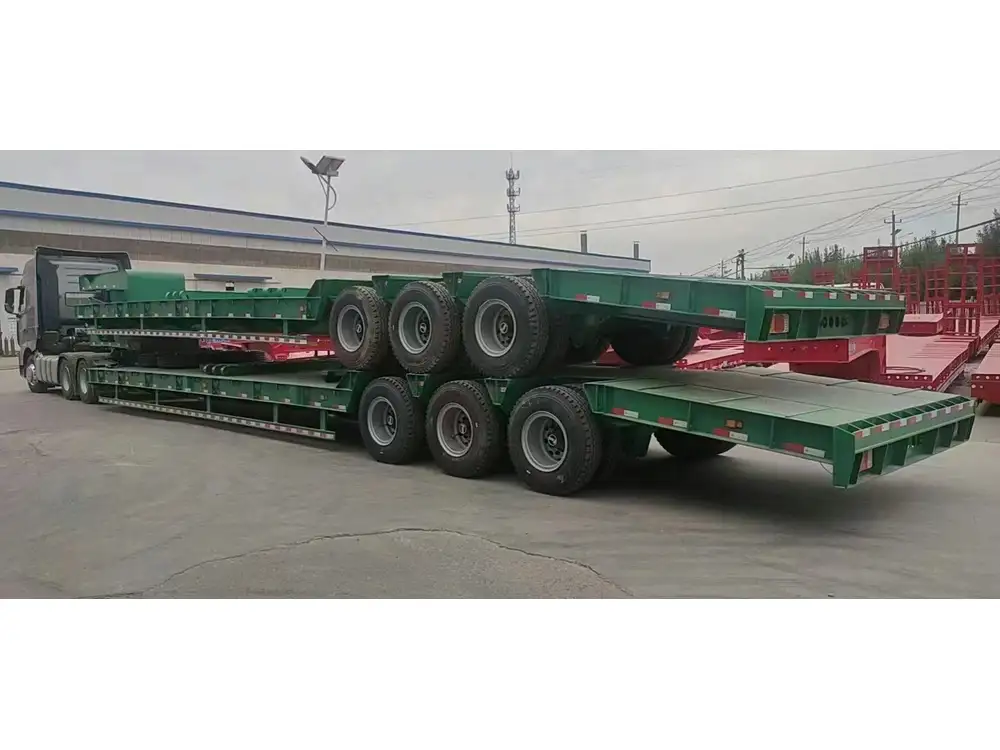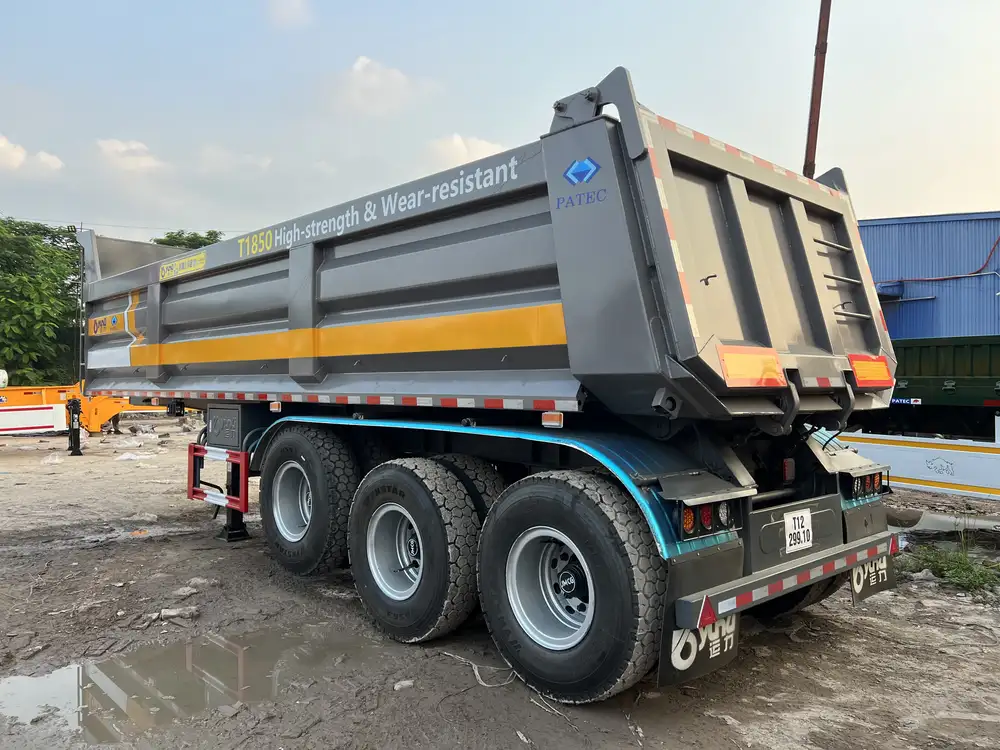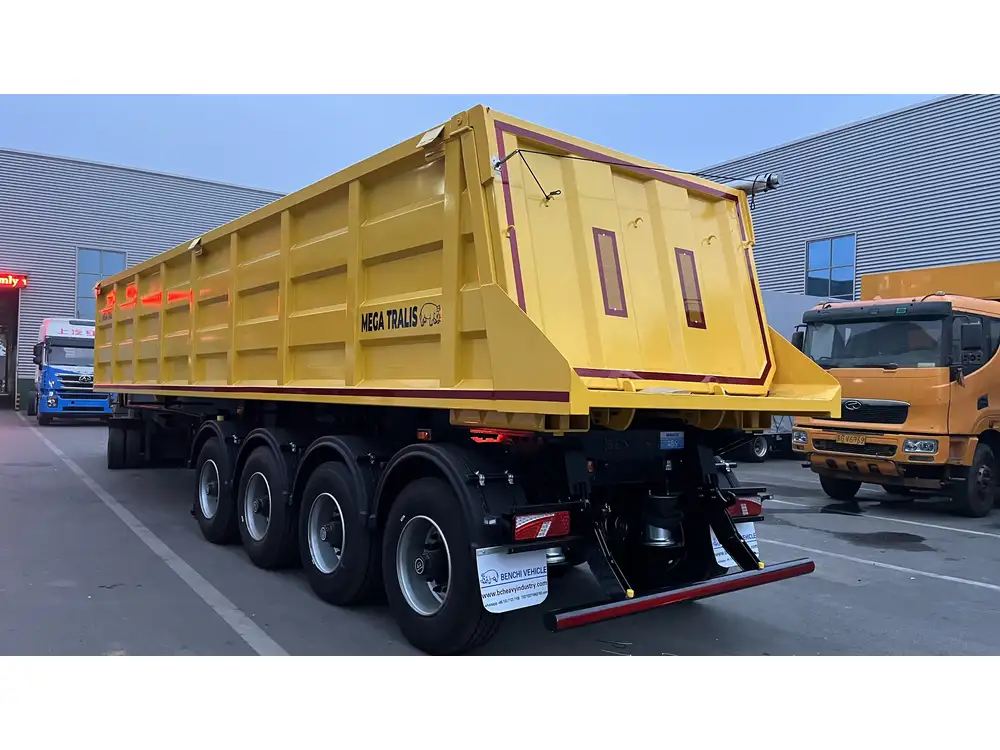When it comes to operating semi-trailers safely and effectively, understanding how to chain up an axle is crucial for drivers, maintenance crews, and fleet owners. Whether you are securing a load, preparing for inclement weather, or performing essential safety checks, the procedure of chaining up axles ensures stability and compliance with road regulations. This guide provides a detailed examination of the entire process, equipping you with the knowledge necessary to perform it efficiently.
1. Understanding the Importance of Chaining Up an Axle
1.1. Safety Compliance
Safety is paramount in the trucking industry. Chaining up your axle not only helps in stabilizing your vehicle but also ensures compliance with regulatory requirements. This is especially important during adverse weather conditions, where extra traction may be required.
1.2. Load Security
A well-chained axle minimizes the risk of shifting loads, which can lead to dangerous driving conditions, potential accidents, or fines. Properly securing the axle also facilitates even weight distribution across the semi-trailer.
2. The Essentials: Tools and Materials Needed
Before embarking on the chaining process, ensure you have the following tools and materials at your disposal:
| Tool/Material | Purpose |
|---|---|
| Heavy-duty Chains | To secure the axle in place |
| Chain Binders | For tightening the chains adequately |
| Gloves | To protect hands while handling chains |
| Safety Goggles | For eye protection during the process |
| Working Lights | If chaining needs to be done under low visibility conditions |

3. Step-by-Step Guide to Chaining Up an Axle
Chaining up an axle is a straightforward process when approached methodically. Below, we detail the steps needed for effective axle chaining.
3.1. Prepare Your Work Area
- Safety First: Begin by ensuring your semi-trailer is parked on a stable, flat surface. Engage the parking brakes and ensure wheel chocks are in place to prevent any movement.
- Visibility: If working in low-light conditions, make sure to turn on your working lights to enhance visibility.
3.2. Selecting the Right Chains
- Chain Specifications: Choose heavy-duty chains that are appropriate for the weight and specifications of your semi-trailer axles. Commonly, 3/8” chains are used for heavy-duty applications.
- Length Matters: Ensure the chains are long enough to wrap around your axle several times for stability without being too lengthy that they drag on the ground. A minimum length of 25 feet is advantageous.

3.3. Wrapping the Chains
- Looping the Chain: Start at one end of the axle. Loop the heavy-duty chain around the axle and bring it back to the start point, forming a circular pattern. Aim for about three full loops for stable anchoring.
- Positioning: The chain should sit flush against the axle, avoiding any angles that might cause it to slip or shift when tightened.
3.4. Tightening the Chains
- Using Chain Binders: Feed the ends of the chain through the chain binder to secure the loop. This apparatus serves to tighten the chain until it is secure.
- Proper Tension: Ensure the chains are tight enough to prevent any slippage, but not overly tight to risk damage to the axle or the chains themselves. Listen for a “click” sound from the binder, indicating it has engaged properly.
3.5. Final Safety Checks
- Inspect Your Work: Before hitting the road, conduct a thorough visual inspection of your chains. Check for any signs of wear or improper positioning.
- Test Movement: Slightly wiggle the axle to verify that the chains are stable and do not exhibit any movement.

4. Troubleshooting Common Issues
Even the best-laid plans might face hiccups. Here are some common issues encountered and how to deal with them:
4.1. Chain Slip
If you notice the chains slipping:
- Solution: Recheck the tightness of the chain binders. Make sure they are functioning correctly and securely attached to their respective chains. If the chains appear to be worn, consider replacing them.
4.2. Inadequate Chain Length
Should you find that your chains are too short:
- Solution: Invest in additional chains of appropriate length. A good rule of thumb is to always carry spare chains for unforeseen circumstances.

4.3. Environmental Factors
Extreme weather may impact securement:
- Solution: In icy or snowy conditions, consider using tire chains as an additional preventive measure against slippage, which could affect how well your axle chains hold.
5. Best Practices for Chain Maintenance
Maintaining your chains properly will increase their lifespan and efficiency. Consider the following best practices:
- Regular Inspections: Routinely check for rust, wear, and loose links.
- Proper Storage: Store chains in dry conditions when not in use. Exposure to moisture can lead to rust, thereby compromising their strength.
- Lubrication: Occasionally applying lubricants can help in preventing rust and maintaining ease of use.
6. Legal Requirements and Regulations to Consider
Chaining methods may vary by state or country due to differing legal requirements regarding semi-trailer operation. Always familiarize yourself with:
- Local Laws: Check state regulations regarding chain usage, especially in regions prone to harsh weather.
- Commercial Vehicle Safety Standards (CVSS): Adhere to industry standards that govern the safe operation of commercial vehicles.

7. Conclusion
In summary, understanding how to chain up an axle on a semi-trailer is a fundamental skill that enhances safety, compliance, and overall load stability. This comprehensive guide outlines step-by-step procedures, effective troubleshooting methods, and the significance of equipment maintenance to ensure an efficient operation. With the right knowledge and groundwork, you can confidently and competently manage axle chaining, contributing to smoother and safer journeys on the road.
By following these instructions, you’ll not only comply with safety regulations but also enhance the longevity of your equipment while securing loads efficiently on your semi-trailer. Equip yourself with this knowledge and ensure each journey is well-prepared—safety begins with you.



